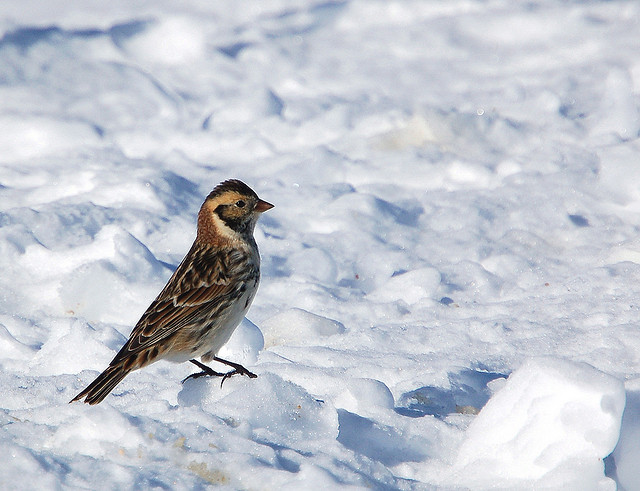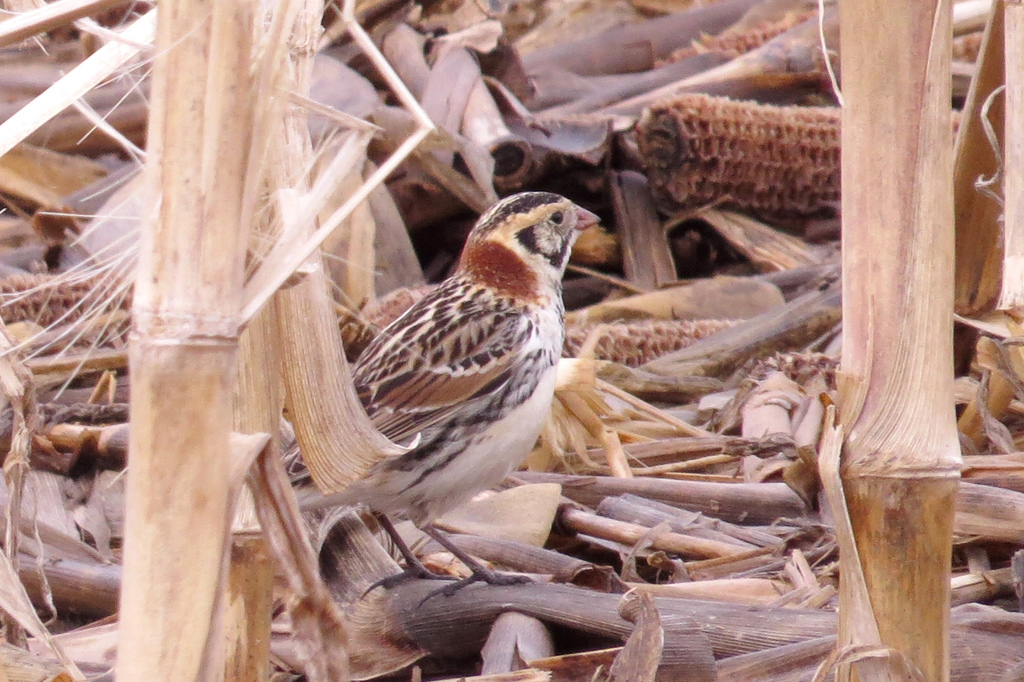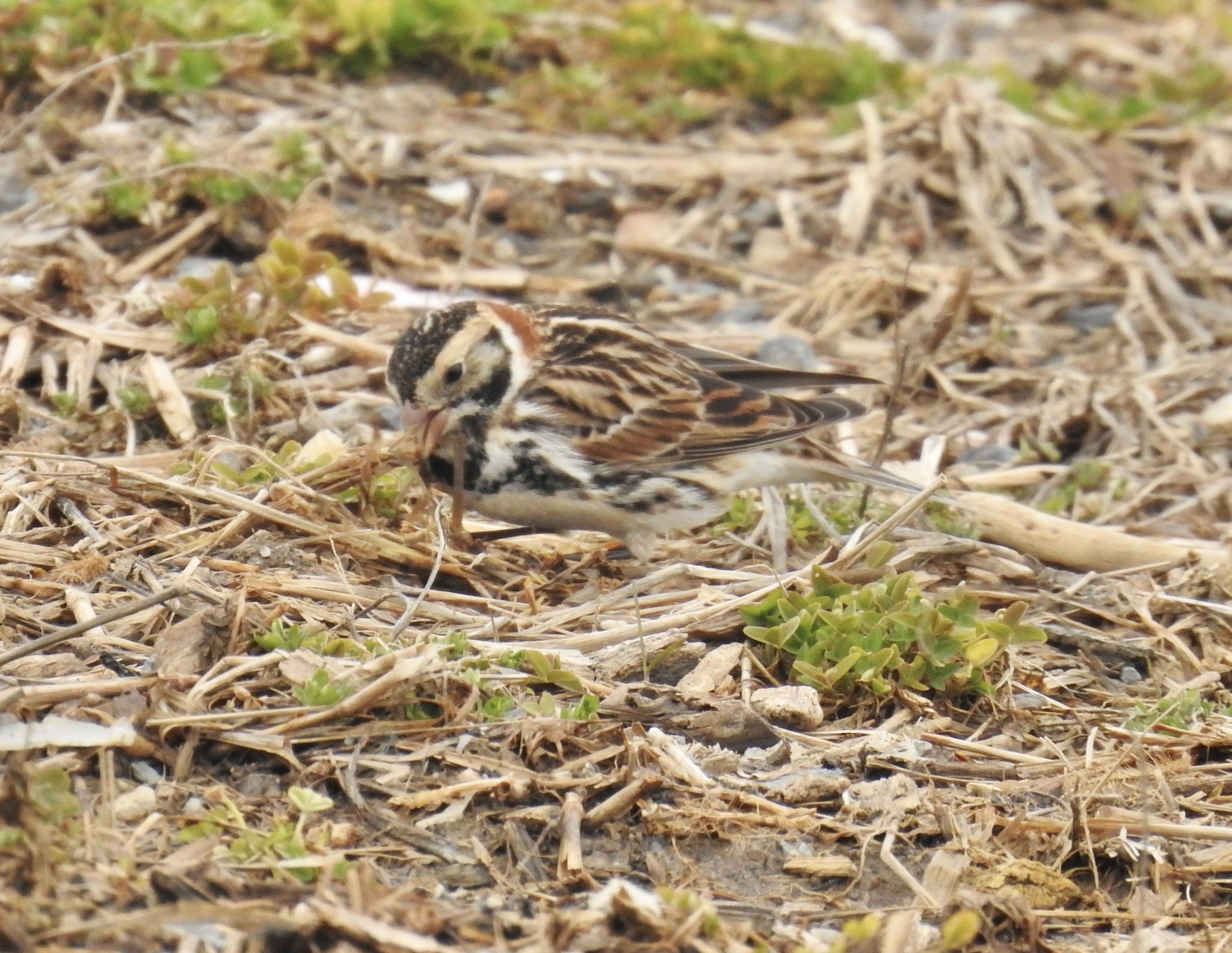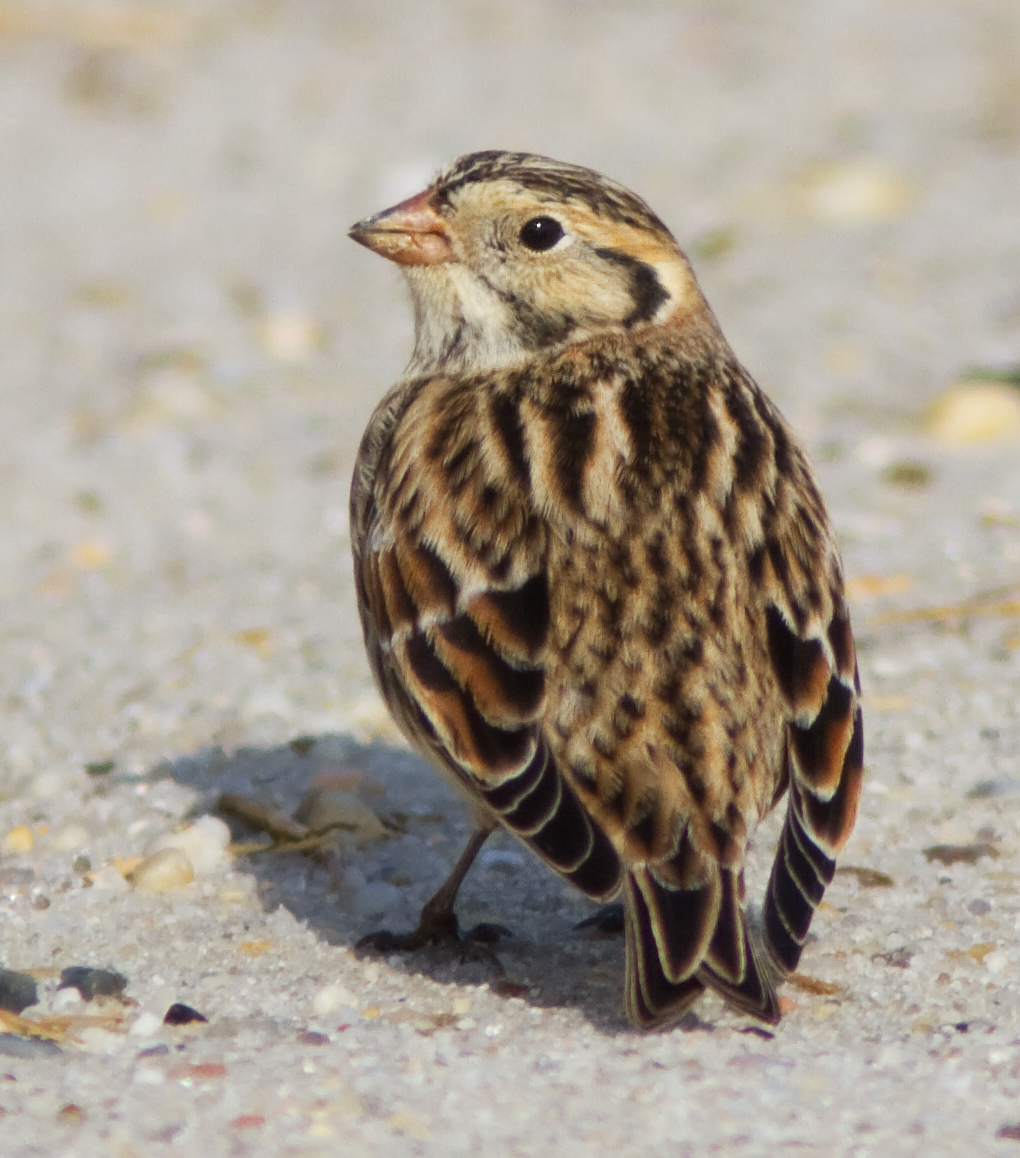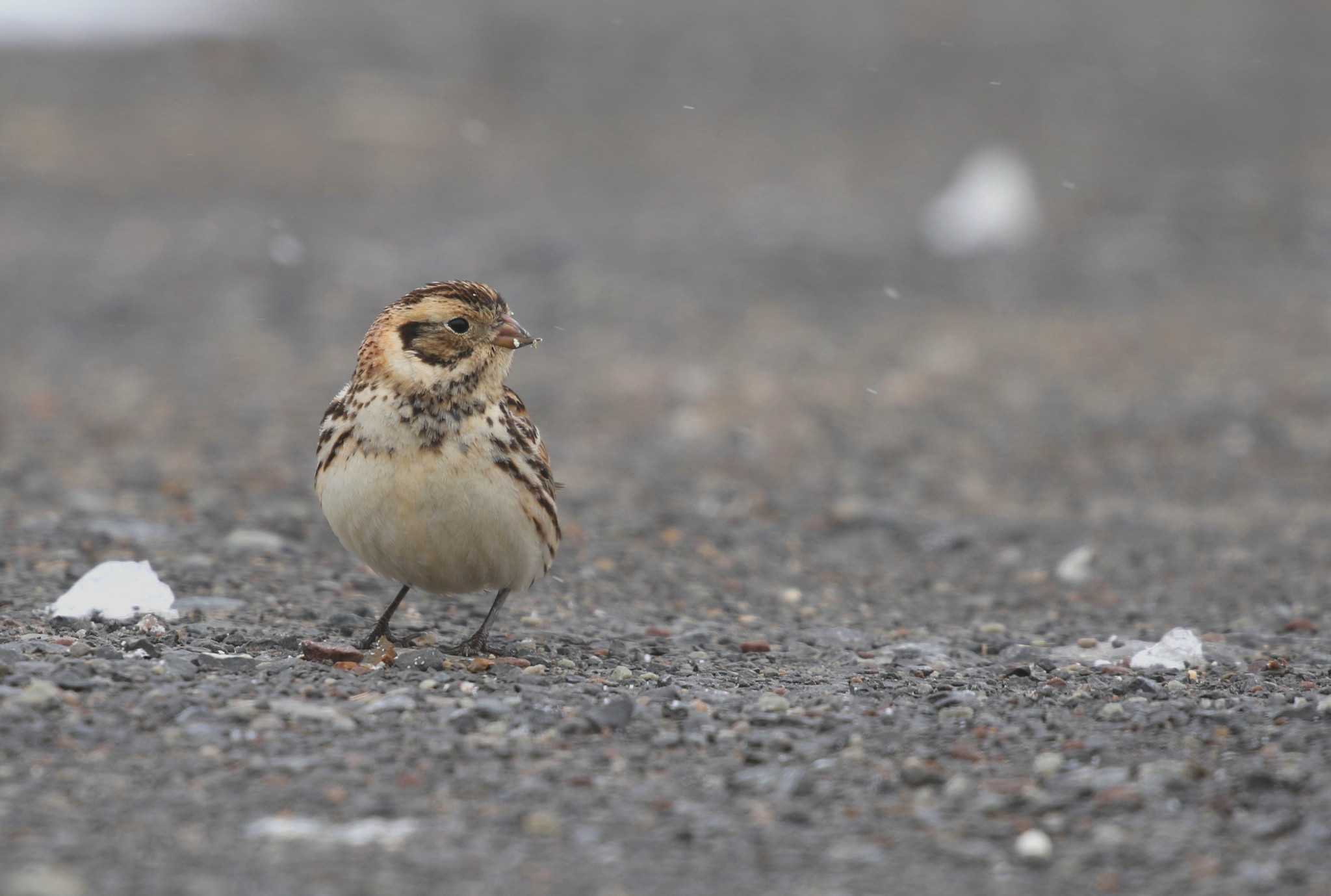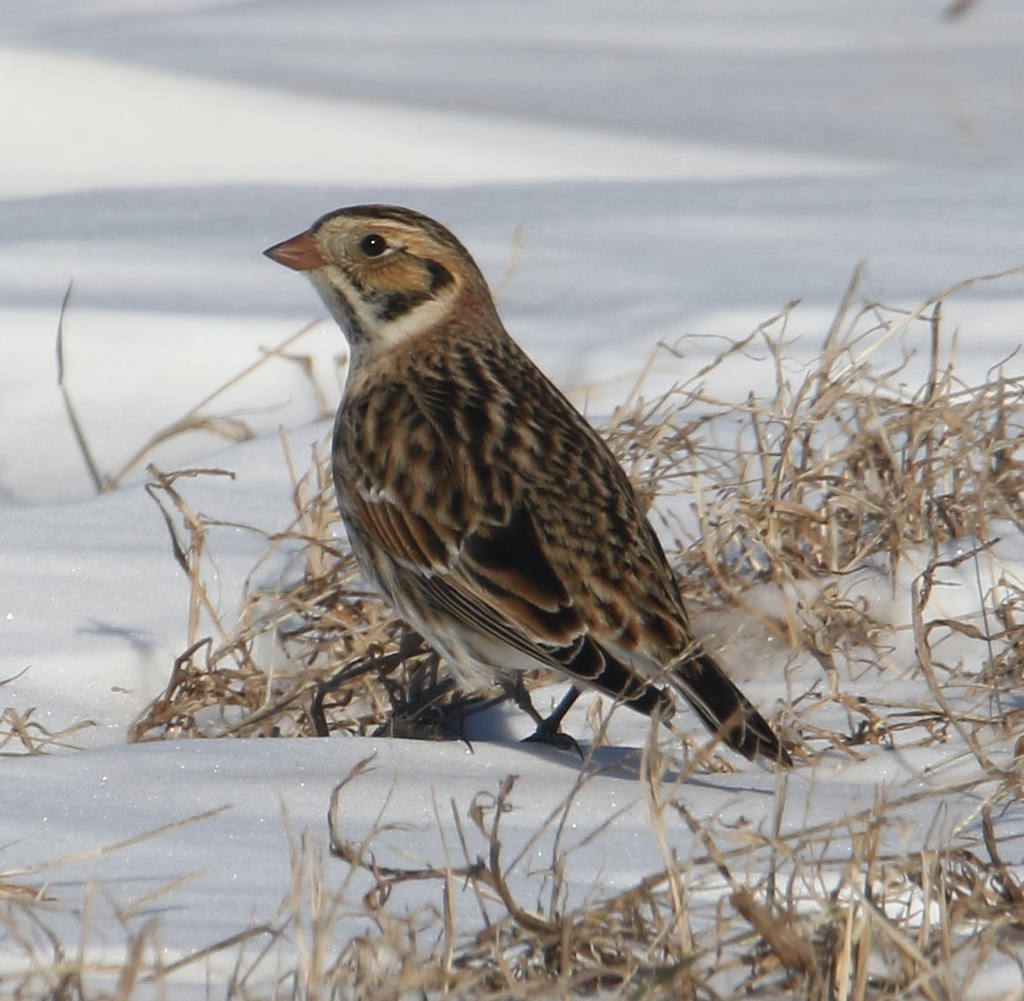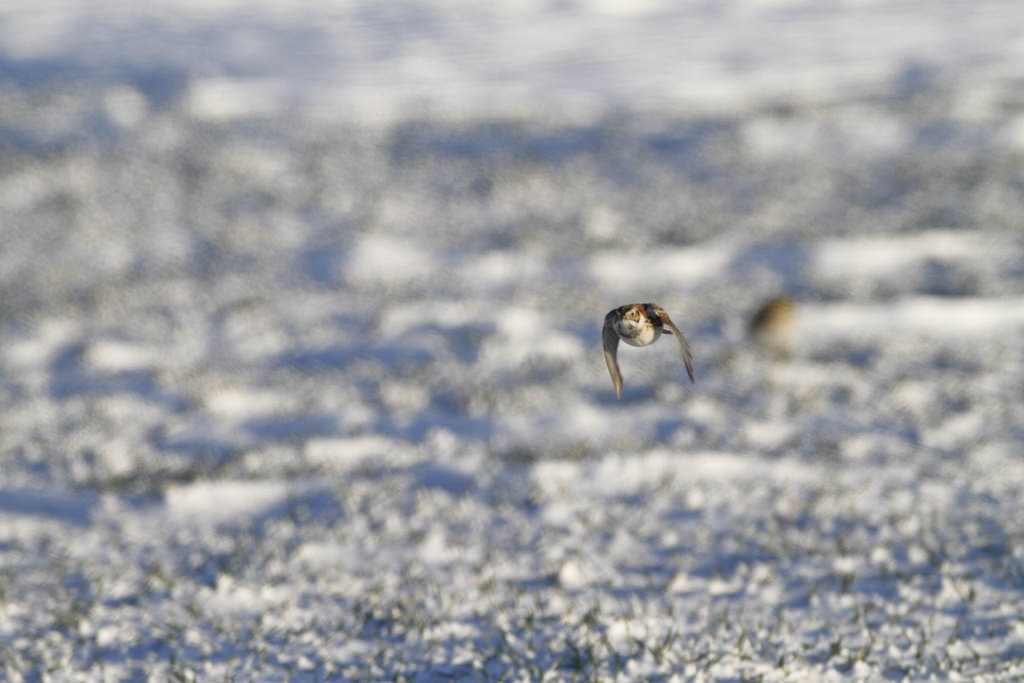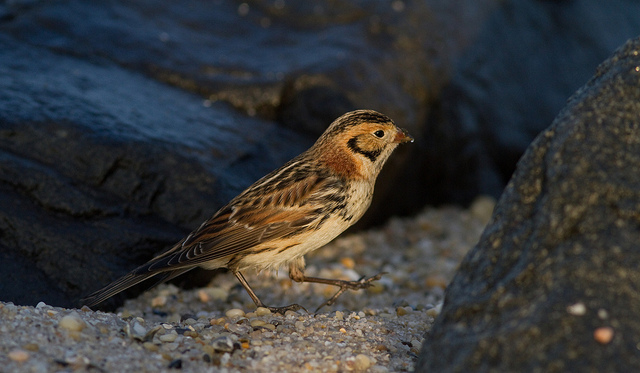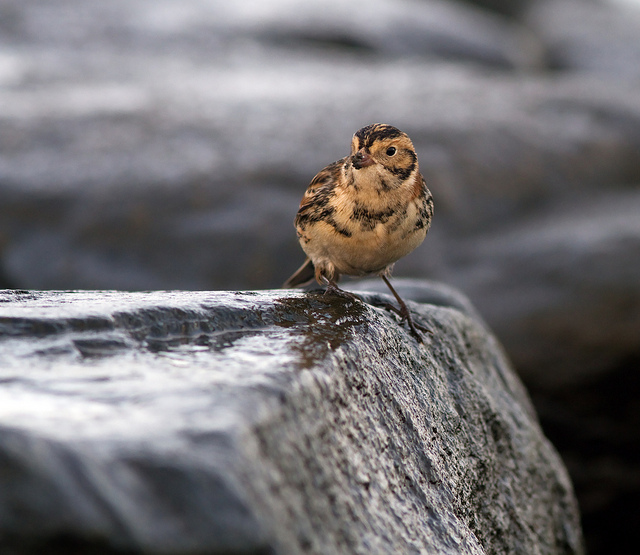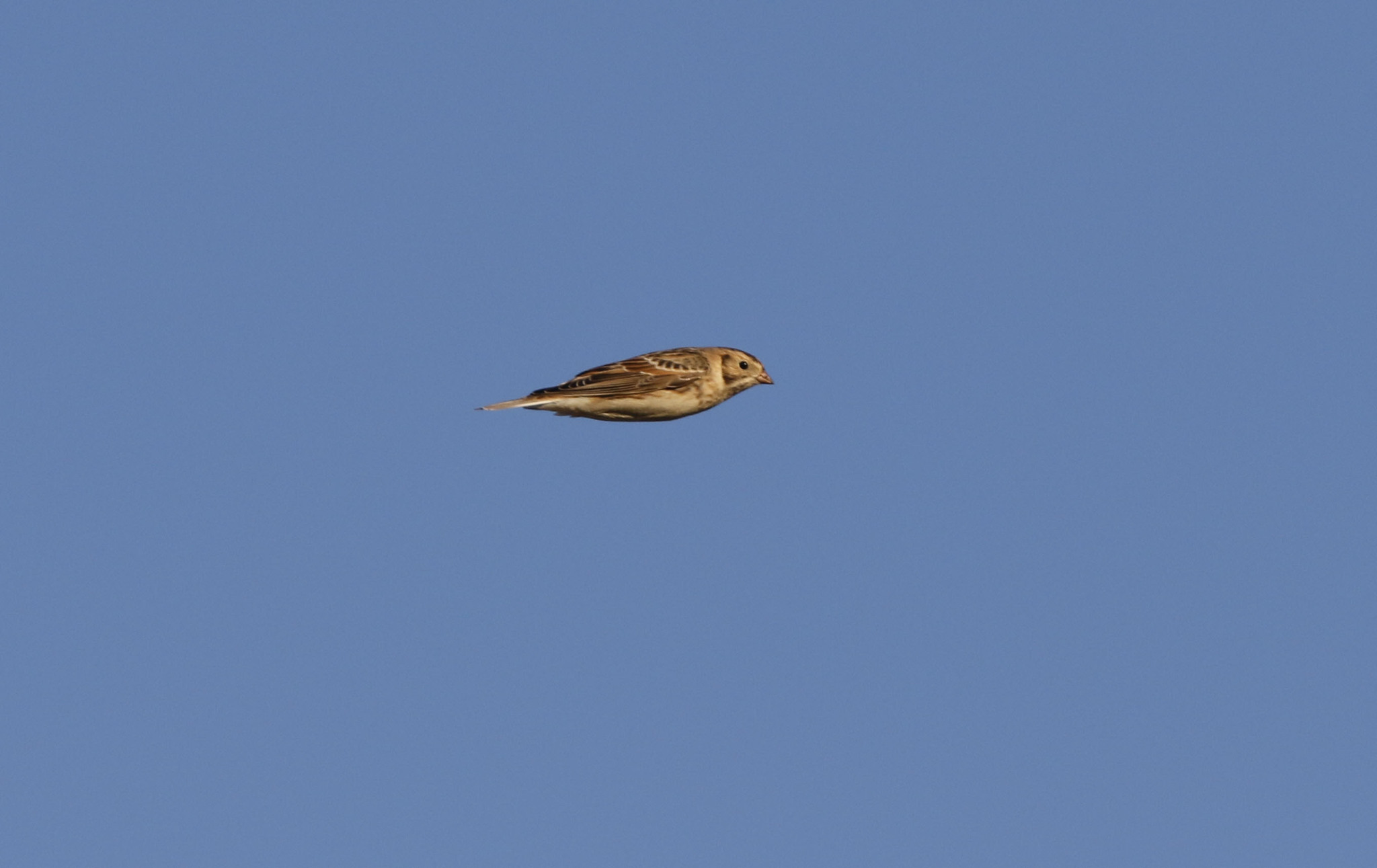

 Synonyms: LALO.
Synonyms: LALO.






















The Lapland Longspur breeds in the high Arctic and winters in open areas across much of the U.S., especially the Midwest. It is an uncommon migrant and winter resident in Maryland. Though infrequently detected in Maryland, it is actually one of North America's most common songbirds. Cornell notes observations of winter flocks estimated at 4 million birds! This species is the only North American longspur found outside our continent. It is found throughout the northern reaches of the Northern Hemisphere and is known in Eurasia as the Lapland Bunting.
The common name "longspur" refers to the large hind claw found on this species, other members of its genus, and on American Pipit. These long claws add stability on uncertain terrain such as mud and snow. Under field conditions, you're likely to first spot a Lapland Longspur as the smaller, darker species among Horned Larks. Learning the distinctive "rattle" call is also a big help.
Most Lapland Longspurs found in Maryland appear amidst flocks of Horned Larks, especially large flocks and especially when snow concentrates them at roadsides or patches of open ground.
There are 113 records in the project database.
| GA | AL | WA | FR | CL | MO | HO | BA | BC | HA | CE | PG | AA | CV | CH | SM | KE | QA | CN | TA | DO | WI | SO | WO |






